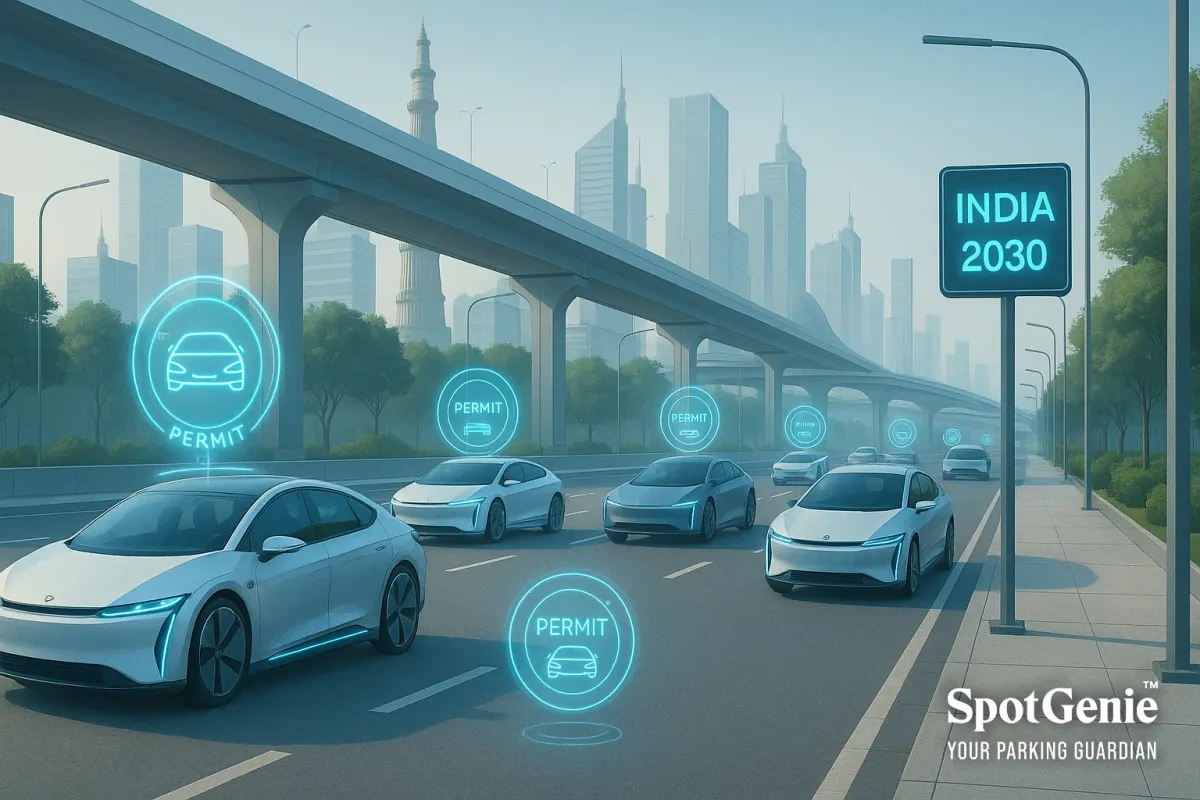SpotGenie Gyaan: The Future of Self-Drive Rentals in India (2025-2030 Outlook)
India’s self-drive rental sector is entering a new era. Between 2025 and 2030, electric fleets, AI-powered management, and nationwide digital permits will redefine how Indians rent and drive cars. SpotGenie Gyaan looks ahead.

The Future of Self-Drive Rentals in India (2025-2030 Outlook) | SpotGenie Gyaan
1. A decade of rapid evolution
From 2015’s handful of app-based operators to 2025’s nationwide ecosystem, India’s self-drive rental story has come full circle. The early years were marked by patchy regulations and consumer hesitation. But policy reforms in 2024-25, especially state-level digital permit systems, have laid the foundation for a smarter, compliant decade ahead.
2. Technology shaping the next phase
The next wave is powered by electric vehicles (EVs), data analytics, and AI-driven fleet management. Rental platforms are experimenting with dynamic pricing, predictive maintenance, and telematics-based insurance. These systems make rentals cheaper, safer, and more efficient.
Meanwhile, digital permit verification and QR-based vehicle identification are becoming the norm. This is where innovations like SpotGenie’s QR alert stickers contribute, simplifying verification, encouraging transparency, and helping drivers act responsibly on the road.
3. Government’s 2030 mobility vision
The Ministry of Road Transport and Highways (MoRTH) and NITI Aayog are steering India towards a 2030 target of unified, sustainable mobility. The draft National Transport Policy envisions digital permit systems, integrated road safety data, and EV-ready infrastructure, including incentives for shared and self-drive rental fleets.
Several pilot programmes in Maharashtra, Delhi, and Kerala already use digital compliance dashboards, allowing authorities to track commercial vehicles in real time. Expect these frameworks to merge into a national platform by the end of the decade.
4. Challenges on the road ahead
Growth still faces friction. Insurance structures for short-term rentals remain unclear, and cross-state vehicle movement often triggers redundant checks. Industry experts stress the need for a national registry for self-drive cars to unify licensing, tax, and enforcement mechanisms.
5. SpotGenie’s relevance in tomorrow’s mobility
SpotGenie, with its QR-based alert and safety sticker system, supports this vision by empowering drivers and authorities with instant, contactless access to verified vehicle details. It bridges the trust gap between citizens, operators, and enforcement, aligning perfectly with India’s digital-first road safety goals.
6. From novelty to necessity
By 2030, renting may become the new owning. Urban professionals, travellers, and eco-conscious citizens will increasingly favour shared mobility over personal car ownership. As regulation catches up and infrastructure matures, India’s self-drive market will evolve from a convenience to a necessity, a sign of true mobility maturity.
🔗 Related Reading:
How Legal Self-Drive Businesses Operate (Case Study, India) ·
India’s Crackdown on Illegal Self-Drive Rentals (2025) ·
State Regulations for Self-Drive Rentals in India (2025)
Follow us on:
🅾 Instagram |
ⓕ Facebook |
𝕏 X |
▶️ YouTube |
🟢 WhatsApp



